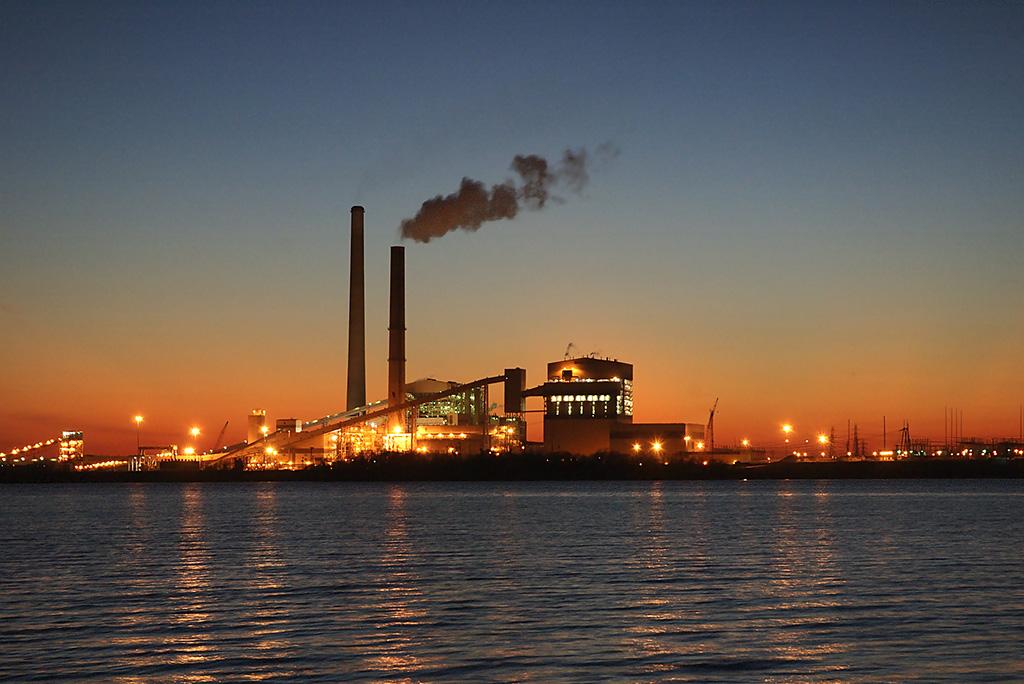
Coal-Fired Power Plant
Project Highlights
- Validate method to directly comply with the particulate matter (PM) MATS emission limit
- Enable accurate determinations of plant non-Hg HAP metals emissions
- Reduce events that may temporarily increase particulate emissions required for compliance with PM CEMS
Background, Objectives, and New Learnings
Energy companies today are tasked with maintaining reliability and affordability while taking steps to comply with existing and evolving environmental regulations. The U.S. Environmental Protection Agency (EPA) established the Mercury Air Toxics Standard (MATS rule), which sets individual emissions limits for new and existing electric generating units (EGUs) for non-mercury (Hg) hazardous air pollutant (HAP) metals, Hg, and acid gases. For non-Hg HAP metals, the owner/operator may demonstrate compliance with a non-Hg HAP metals limit, or a filterable particulate matter (PM) emission limit used as a surrogate for non-Hg HAP metals.
Based on a 2024 update to the MATS rule, filterable particulate matter (PM) emission limits are reduced by two-thirds for all coal-fired units, and the use of PM continuous emissions monitoring systems (PM CEMS) is required for all existing coal electric generating units (EGUs). Total or individual non-Hg metals limits were lowered by a third to match the new filterable PM limit.
PM CEMS systems can be challenging to certify and operate. The Performance Specification 11 (PS-11) correlation test, and specific ongoing QA/QC tests require spiking of fly ash, de-tuning, or partial bypass of the environmental controls equipment to achieve the low, mid, and high fly ash mass concentration levels. PS-11 and subsequent Relative Correlation Accuracy (RCA) tests have proven challenging and costly. Additionally, these correlations may be less representative of actual control device conditions.
A new sorbent trap method for continuous monitoring of metal HAPS emissions in development may allow EGUs to comply with the non-Hg HAPS emissions limit directly. It is modeled after the EPA Performance Specification 12B (PS 12B) for mercury, extended to cover a range of metals, including, but not necessarily limited to: antimony (Sb), arsenic (As), beryllium (Be), cadmium (Cd), chromium (Cr), cobalt (Co), copper (Cu), lead (Pb), manganese (Mn), nickel (Ni), selenium (Se), and zinc (Zn). The sorbent traps are specially designed and produced to capture filterable metals (bound to particulate matter) and vapor-phase metals. This is accomplished with the use of a two-stage filter inside the trap, followed by two sections of sorbent material. A third section of sorbent material is added if a spiked section is required for the application.
This method has the potential to allow EGUs to comply with the metal HAPS emissions limit directly, as opposed to complying with a filterable PM emission limit as a surrogate. The use of metal sorbent traps would also eliminate having to install and operate a new continuous PM CEMS monitor, as well as having to perform PS-11 and RCA QA/QC tests that requires direct spiking of fly ash into the flue gas, or de-tuning of the particulate collection device. Either option requires the increase of particulate emissions to perform the required tests.
The objective of this multi-utility supplemental project is to demonstrate the sorbent trap systems ability to make direct measurement of metal HAPs emissions, as well as evaluate the sorbent trap system by comparing it to the EPA Method 29 (method for determining of metal emissions from stationary sources) and acquire coal fly ash metal content data. If successful, this the new metal sorbent trap method may be used for continuous monitoring of metal HAPS at coal-fired sites to meet the non-Hg HAP metals compliance requirements of the recently updated MATS Rule.
Benefits
A successful demonstration of the metal sorbent trap method would enable direct measurements of metal HAPs emissions, and compliance with the MATS Rule emission limit. The public may benefit by potentially enabling more accurate determinations of plant metal HAPs emissions, while also reducing the need and associated resources for continuous PM CEM QA/QC events that can temporarily increase particulate emissions.
Project Approach and Summary
The project team will work with each participant host site to identify coal type and available fly ash analyses, proposed unit operating conditions during the metal HAPs tests, measurement location logistics (e.g., port type and physical access, power, and plant air availability, along with distance to each measurement location).
A schedule will be established with the host site where a minimum of three metal sorbent trap tests can be performed at a constant load in parallel with Method 29 reference method tests over a nominal one-week period. In addition, each participant host site will provide a coal sample collected in the morning and afternoon of each test day for subsequent fly ash composition analyses, as well as select PI plant (e.g., MW, etc.), environmental controls and PM CEMS data for a month prior to testing and during the testing period.
The metal sorbent trap system will be evaluated by comparing its metal emission results to the EPA Method 29, which is the current method for determining of metal emissions from stationary sources.
Deliverables
All project funders will be invited to participate in periodic project webcasts. Project results will summarize, on an anonymous basis, the host site(s) design and operating conditions, test approach, sample analyses, and results.
Price of Project
EPRI is seeking at least four funders at a cost of $50,000 each to be able to complete two demonstrations, with a minimum of two participants required to initiate the project. The project qualifies for Self-Directed Funding (SDF).
Project Status and Schedule
The project will start once a host site is secured and sufficient project collaborators are engaged. The initial scope is anticipated to run for a six-month period.
Who Should Join
Energy companies with units subject to MATS rule and that are required to comply with the non-Hg HAPS emissions limit.
Contact Information
For more information, contact the EPRI Customer Assistance Center at 800.313.3774 (askepri@epri.com).
Technical Contact
Cassie Shaban at 650.855.2345, cshaban@epri.com